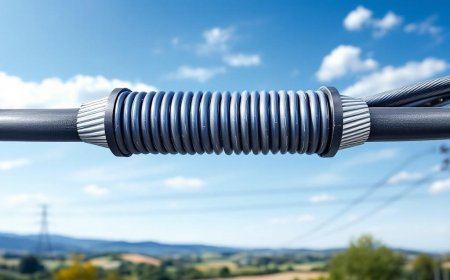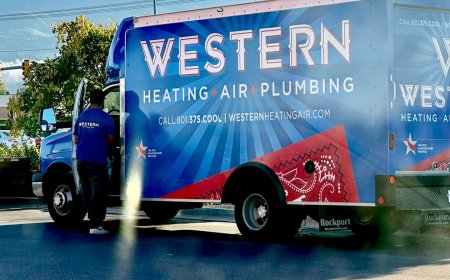High Voltage Cables: Key Considerations for Safety and Efficiency
This blog by the high-voltage cable manufacturers covers the most important factors that must be observed in dealing with high-voltage cables by engineers, contractors, and facility managers.

High-voltage cables are an indispensable part of modern power transmission and distribution networks. HV cables play a crucial role in transmitting electricity from power plants through substations to household, business, and industrial consumers. In this regard, high-voltage cable selection, installation, and maintenance must be carefully followed so that they are efficient and safe.
This blog by the High Voltage Cable Manufacturers covers the most important factors that must be observed in dealing with high-voltage cables by engineers, contractors, and facility managers.
Understanding High Voltage Cables
High-voltage cables are electrical cables designed to carry voltages typically above 1,000 volts for AC or higher than 1,500 volts for DC. They find their applications in power transmission lines, industrial plants, and big commercial establishments where the demand for energy is high.
These cables have a series of layers:
- Conductor: This is normally the central part of the cable, usually made from copper or aluminum, where the electric current is held.
- Insulation: Insulation before the conductor prevents the current from leaking away and causing short circuits. Commonly used insulation materials are cross-linked polyethylene (XLPE) and ethylene propylene rubber (EPR).
- Screening: Metal screens or shields limit electromagnetic interference and retain the electric field distribution.
- Sheath/Armour: These provide mechanical protection against physical damage, water, and chemicals.
It is crucial to understand these components because each layer influences the safety, efficiency, and lifespan of the cable.
Key High-Voltage Cable Safety Considerations
Safety is always the highest priority when it comes to handling high-voltage cables. Failure can lead to electrical shock, fire, equipment failure, and death. These are the most critical considerations as far as safety is concerned:
1. Proper insulation
Insulation of high-voltage cable must be capable of withstanding operating voltage and environmental conditions. Breakdown of insulation results in electrical breakdown, short circuit, and arc flash. XLPE insulation is employed as it possesses high dielectric strength in addition to thermal aging resistance. Periodical insulation resistance testing identifies degradation much before it causes failure.
2. Proper Grounding
Grounding prevents the buildup of destructive-type voltages in the system; the electric shock hazard is reduced. Good grounding of high-voltage cables keeps any leakage current from being wasted in the ground. The grounding activities must be done as per the local electrical codes as well as the IEEE and IEC recommendations.
3. Thermal Management
High-voltage cable generates heat during operation due to electrical resistance. Overheating causes the insulation to deteriorate and results in a catastrophic failure. Cable selection with adequate current-carrying capacity, taking into consideration ambient temperature and minimum distance between cables, avoids overheating. In buried or high-density installations, forced cooling arrangements are required in certain cases.
4. Protection against Physical Damage
The cables installed in the industry or buried underground are subjected to various mechanical forces like impact, vibration, and crushing. These are protected against such damage by armoured cables or by protective conduits. Further protection against accidental damage during building or maintenance is provided by proper trenching and routing of the cables.
5. Fire Safety
Even high-voltage cables can be the reason for a fire in case they burn or the insulation is burnt. Halogen-free, fire- and smoke-resistant sheath cable minimizes the fire hazard and toxic gas discharge in a fire. Fire safety standards need to be adhered to in public buildings, factories, and tunnels.
Efficiency Considerations in High Voltage Cable Design
Safety is only half the story; so is efficiency. Efficient high-voltage cable systems reduce energy loss, lower maintenance costs, and extend operating life. Most crucial elements in efficiency are:
1. Conductor Material and Size
The most common materials used as conductors are copper and aluminum. Copper conducts better but is heavier and more costly, while aluminum is lighter and less costly. The proper selection of the material and cross-sectional area of the conductor will result in minimum energy loss in conveying the required current load. Undersized conductors will introduce resistive losses, while oversized conductors incur unnecessary costs for the project.
2. Voltage Drop
Voltage drop is the situation where the voltage delivered at the end of a cable run is lower than the supply voltage due to loss through resistance. Significant voltage drop affects the performance of equipment and results in high energy usage. Correct cable sizing considering length and load current will be required in an attempt to eliminate voltage drop and maintain system efficiency.
3. Dielectric Losses
In the insulation of high-voltage cables, dielectric losses occur when the current is an alternating current. These losses inflict damage and a loss of overall efficiency. Use of low dielectric loss insulation, i.e., XLPE, can be used in improving system performance, especially for long lines.
4. Electromagnetic Interference (EMI)
The electromagnetic fields created by high-voltage cable transmissions may interfere with any other sensitive electronic devices in their vicinity. Shielded cables and grounding reduce EMI to a very large extent. Proper routing and keeping them away from low-voltage cables also aid in improving performance and eliminating signal interference.
5. Installation and Maintenance Practices
Proper installation is critical to safety and efficiency. Cables are to be installed according to industry and manufacturer guidelines, e.g., bending radius, cable support, and spacing. Periodic inspection and preventive maintenance detect faults such as deterioration of insulation, corrosion, or mechanical damage at an early stage, decreasing downtime and increasing efficiency.
Conclusion
High-voltage cables are crucial components of the electrical systems of the present, and their safe and efficient operation relies on conscientious care in mounting, design, and maintenance. The key areas are proper insulation, grounding, heat treatment, mechanical guarding, and fire protection. Efficiency is measured in terms of conductor material, voltage drop, dielectric loss, and electromagnetic interference.
Environmental factors and regulations also influence cable performance and life. By taking into consideration their concern for safety, efficiency, and advanced technologies, facility managers and engineers can provide safe power transmission with reduced operational risks and losses. The major steps toward the formulation of a reliable and stable electrical system are investment in quality material, implementation of best practices, and using advanced monitoring systems.
Invisible high-voltage cables can slither on the ground under our feet or above the power lines in the air, but their presence is felt every day. Factory parks to city centres, the reliability of such cables makes sure that electricity flows on safely, economically, and undisturbed, propelling modern life without giving it a second thought.
Also Read: Type 241.1 Cable vs Other Industrial Cables: A Comparison Guide




























